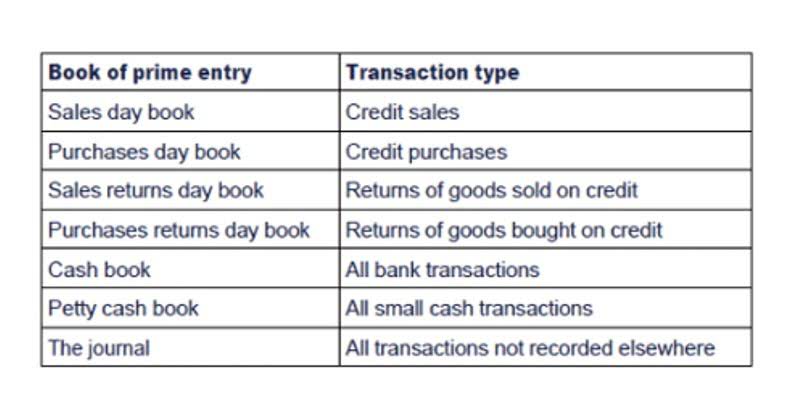Accounting for Law Firms: A Guide Including Best Practices

Each transaction gets recorded as a debit and a credit in the relevant accounts. The general ledger is the source for preparing financial statements and provides a detailed history of all financial activities. If you do not keep track of these and the chart of accounts, expenses can be left out and never get collected. The simplest way to keep track of these is to create one or many billable expense accounts in your Legal E-Billing law firm’s Chart of Accounts. You need to check if your client wants to separately keep track of filing fees, medical records, travel & other expenses.
- MyCase provides trust account reports so you can reconcile your firm’s trust retainer accounts — and remain compliant with state law.
- With CaseFox’s integration, your law firm can optimize financial management, improve efficiency, and drive profitability.
- In this blog, we will be telling you about the meaning and importance of chart of accounts.
- A chart of accounts in a law firm consists of key components like assets, liabilities, revenue, and expenses.
- Good law firm accounting is key to a firms financial health and success.
Segregated liabilities
Beyond specialized accounts like IOLTA, a business checking account plays a fundamental role in effectively managing client funds within a legal practice. If you’re not sure what tax deductions you should be watching for, our post covering the top tax deductions for lawyers and law firms is a good place to start. When it comes to accounting for law firms, whether you handle it yourself or hire someone, your bookkeeping system must maintain a consistent schedule for carrying out bookkeeping tasks. If you want your firm to stay compliant, be financially successful, and grow, you need to have an accurate and clear bookkeeping system for your law firm to follow. This could mean taking on bookkeeping tasks in-house or hiring a professional bookkeeper with experience working with law firms. An accountant who specializes in accounting for law firms is beneficial.

Top Legal Practice Areas and Growth Industries for 2025
- It simplifies billing and invoicing, enhances financial analysis, and optimizes efficiency.
- You earn this money upon the completion of billable work, which can occur during the case as an invoiced bill or upon completion of the case as a final invoice.
- While it’s important to do your own research (and you may want to consult with your accountant), you can use the samples and the template in this post to guide you.
- So, with double-entry accounting, every financial transaction gets sorted into a specific category (assets, liabilities, or equity).
- As an example, LawPay, an online payment platform built for lawyers, automatically enforces the separation of business and client funds throughout the billing and collection process.
There are several templates available for setting up your legal chart of accounts. You can use a general accounting template and customize it to fit your law firm’s needs. Also, you can use a legal-specific template provided by your accounting software.
Insist on Clarity in Financial Statements for Law Firms
- But, you’ll likely need integrated, lawyer-specific tools to manage and reconcile client advances and trust accounts.
- Regularly reviewing and updating the Chart of Accounts will enable law firms to stay agile and responsive to the ever-changing demands of the legal landscape.
- We will also be telling you about the importance and benefits of integrating the chart of accounts with CaseFox.
- Balance Sheet and Income StatementThe transaction records roll up to create your firm’s financial statements.
- But cash basis accounting doesn’t always reflect a law firm’s financial performance as it doesn’t account for accounts receivable or accounts payable.
- Whether it means using legal accounting software to simplify and automate your accounting, hiring a professional legal accountant, or both—don’t be afraid to delegate when you need to.
Additionally, assets can be utilized as a buffer against financial losses. For instance, if a law firm experiences a decline in revenue or an unexpected expense, it may be able to sell assets in order to generate cash and compensate for the losses. Likewise, if the law firm experiences a period of low cash flow, it may be able to use its assets as collateral to secure a line of credit or other form of short-term financing. In this article, we will explore the Chart of Accounts used in legal accounting, including assets, liabilities, equity, revenue, and expenses. InvoiceSherpa supports accounting for law firms by saving you time and energy, increasing https://www.bookstime.com/articles/law-firm-chart-of-accounts your cash flow, and getting invoices paid faster. InvoiceSherpa automates your accounts receivable with reminders and collection software.
Records for Each AccountAs noted, a proper chart of accounts facilitates the appropriate recording of the transactions within those accounts. Following law firm accounting best practices, each transaction requires a debit from one account and a credit to another. Law firms typically keep both client account records and firm account records. Client account records track the money the firm handles on behalf of its clients.

Law Firm Accounting: What’s in Your Law Firm’s Profit & Loss Statement?
For instance, if an expense is incorrectly classified as revenue, it could overstate the firm’s profitability and lead to incorrect tax filings. A well-structured chart of accounts is the backbone Online Accounting of efficient financial management and reporting within a law firm. By establishing a clear hierarchy based on account types, such as assets, liabilities, revenue, and expenses, it provides a standardized framework for recording and classifying financial data. As a lawyer, you know that setting up a legal chart of accounts is essential for managing your law firm’s finances. The legal accounting process can be complicated, but a well-organized chart of accounts can help you keep track of your finances.

Xero: For easier online accounting
All state bar associations require every law firm to list detailed and accurate records of all incoming and outgoing money from trust accounts. Make sure to check with your local state bar association for specific standards about trust accounts and IOLTA. Specific to law firms, a workable chart of accounts helps you keep trust funds and operating funds separate. It also allows for the organization and documentation of advanced client costs so that the firm can bill for them. Your law firm chart of accounts should also track amounts that your firm uses for client expenses, where you expect reimbursement at some point in the future. These amounts include reimbursable client costs, non-reimbursable client costs, and advanced client costs.

Reimbursable Client Expenses
Consider trust accounts if applicable and create sub-accounts to monitor client funds. Align accounts with your reporting needs, tracking costs for individual cases or differentiating marketing expenses. By identifying these accounts, per your firm’s requirements, your chart of accounts becomes a valuable resource for tracking finances. A generic Chart of Accounts may not adequately address the specific needs of a law firm. A tailored chart of accounts for law firms enables precise tracking of legal expenses, client billing, trust accounts, and other unique financial aspects inherent to the legal profession. It ensures that financial reports are not only accurate but also offer meaningful insights into managing the firm’s finances.
